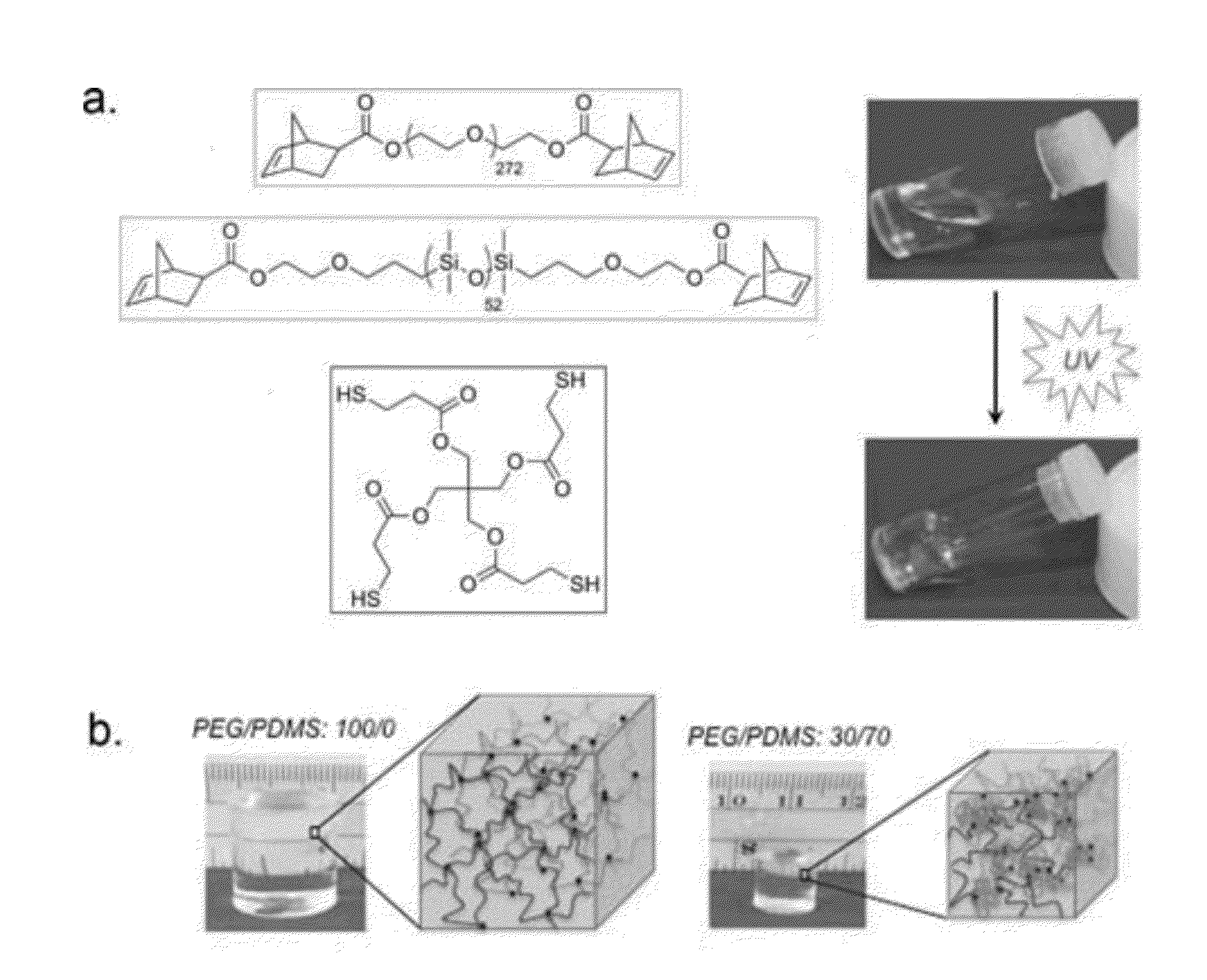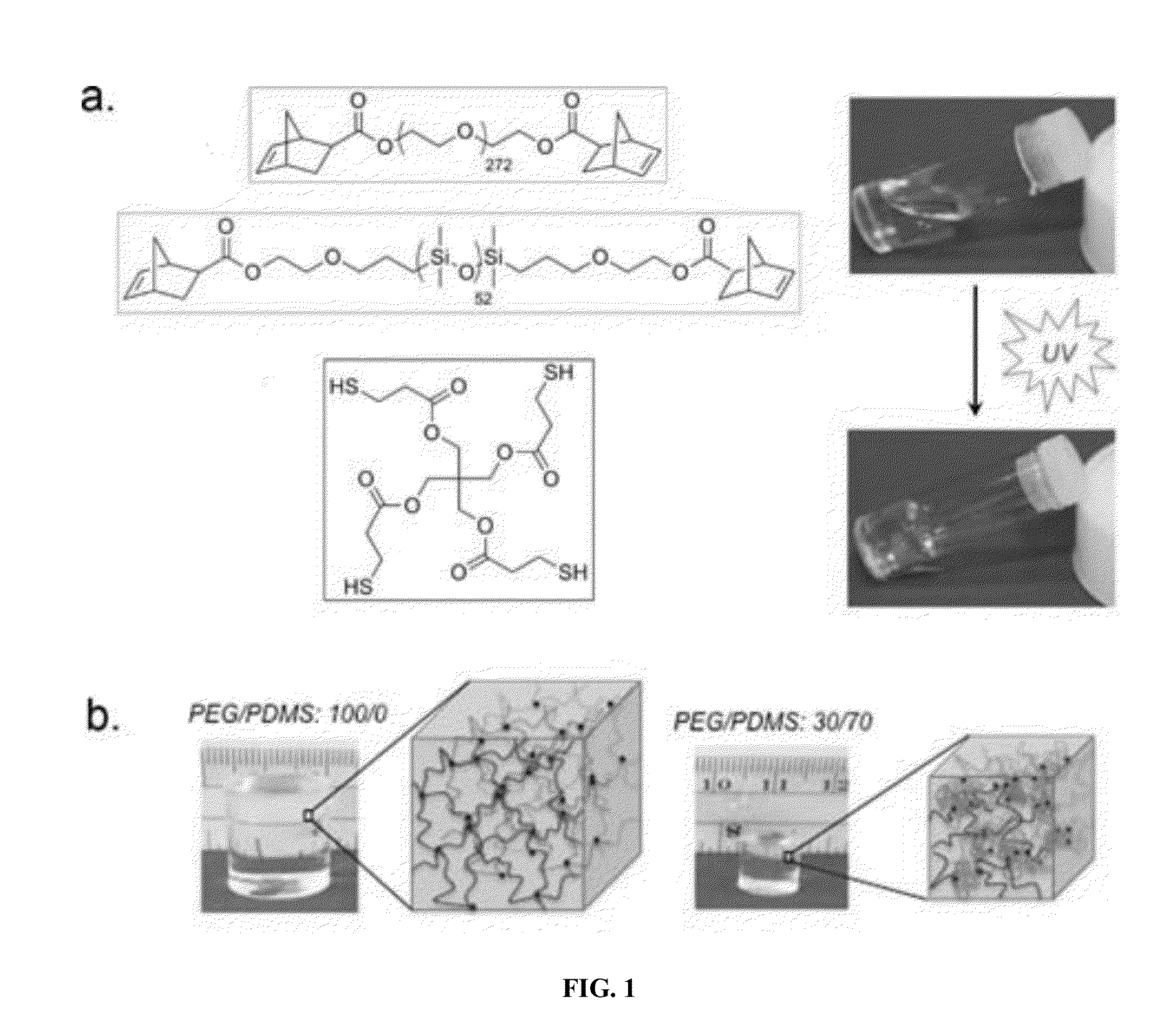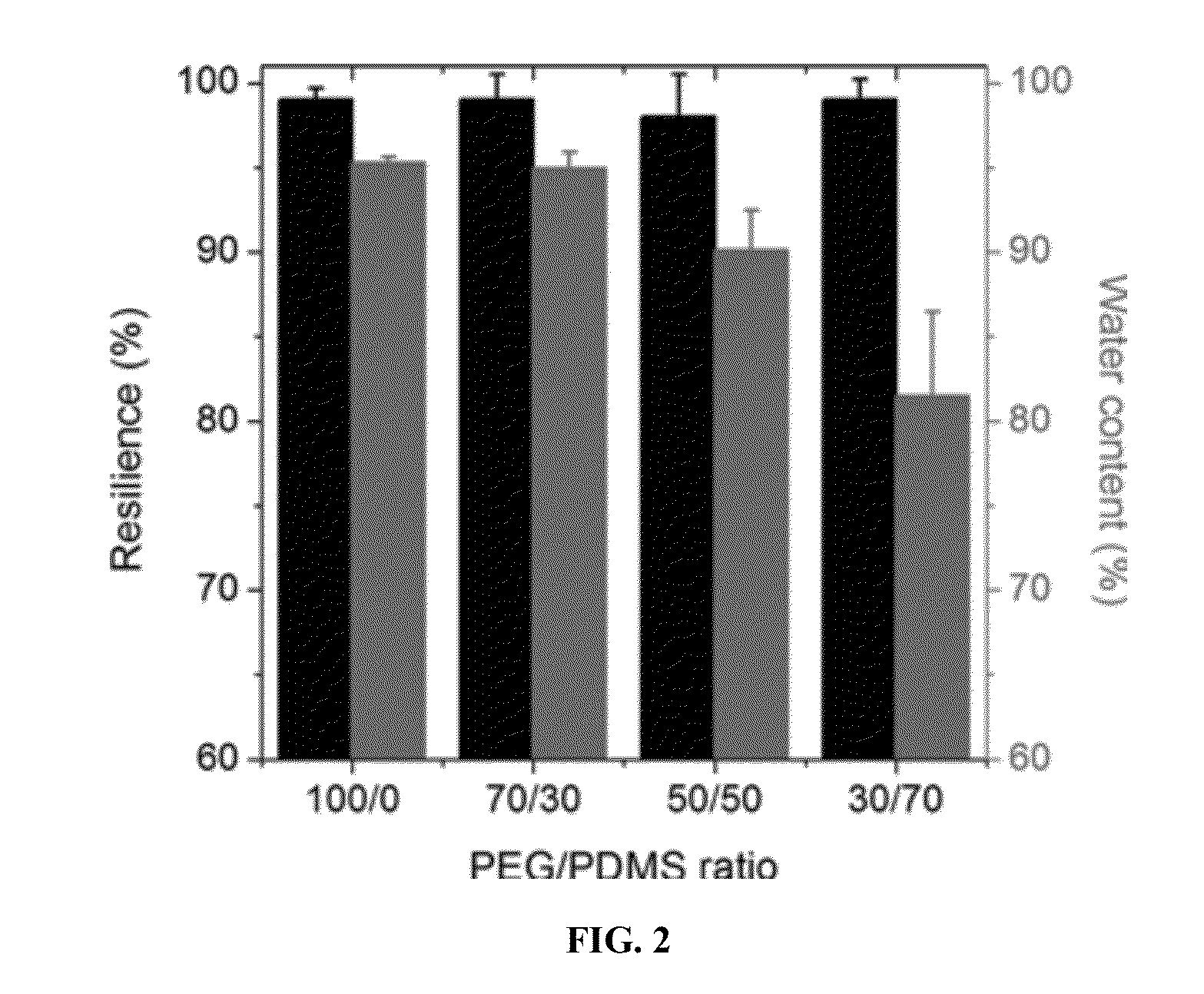Telechelic based networks from novel macromonomers, compositions, preparation and uses thereof
a macromonomer and telechelic technology, applied in the field of macromonomer and macromolecule network, can solve the problems of brittleness, poor mechanical properties, and synthetic hydrogels, and achieve the effect of high resilience and enhanced mechanical properties
- Summary
- Abstract
- Description
- Claims
- Application Information
AI Technical Summary
Benefits of technology
Problems solved by technology
Method used
Image
Examples
examples
[0091]Expressly incorporated herein for all purposes is Jun Cui, Ph.D. Dissertation “RESILIENT POLYMER NETWORKS VIA THIOL-NORBORNENE CHEMISTRY: MECHANICAL AND ADHESIVE PROPERTIES” University of Massachusetts (2012).
Materials and Instruments
[0092]Poly(ethylene glycol) (PEG) (Mn=12 kDa), 5-norbornene-2-carboxylic acid (99% exo), triphenylphosphine, pentaerythritol tetrakis(3-mercaptopropionate) (PETMP), hydroxyl terminated polydimethylsiloxane (PDMS) (Mn=4.5-5.5 kDa, 4.4 kDa according to NMR), diisopropyl azodicarboxylate (DIAD), 2-hydroxy-4′-(2-hydroxyethoxy)-2-methylpropiophenone, 30% acrylamide / N,N′-methylenebisacrylamide (29 / 1) precursor solution, tetramethylethylenediamine (TEMED), and ammonium peroxydisulfate (APS) were purchased from Alfa Aesar, Sigma Aldrich, Acros Organics, Gelest, or Bio-Rad Laboratories and used without further purification. Knox® gelatin was purchased from Walmart.
[0093]1H NMR spectra were recorded on a Bruker DPX 300 spectrometer. Chemical shifts were exp...
PUM
| Property | Measurement | Unit |
|---|---|---|
| Water content | aaaaa | aaaaa |
| Water content | aaaaa | aaaaa |
| Water content | aaaaa | aaaaa |
Abstract
Description
Claims
Application Information
 Login to View More
Login to View More - R&D
- Intellectual Property
- Life Sciences
- Materials
- Tech Scout
- Unparalleled Data Quality
- Higher Quality Content
- 60% Fewer Hallucinations
Browse by: Latest US Patents, China's latest patents, Technical Efficacy Thesaurus, Application Domain, Technology Topic, Popular Technical Reports.
© 2025 PatSnap. All rights reserved.Legal|Privacy policy|Modern Slavery Act Transparency Statement|Sitemap|About US| Contact US: help@patsnap.com



